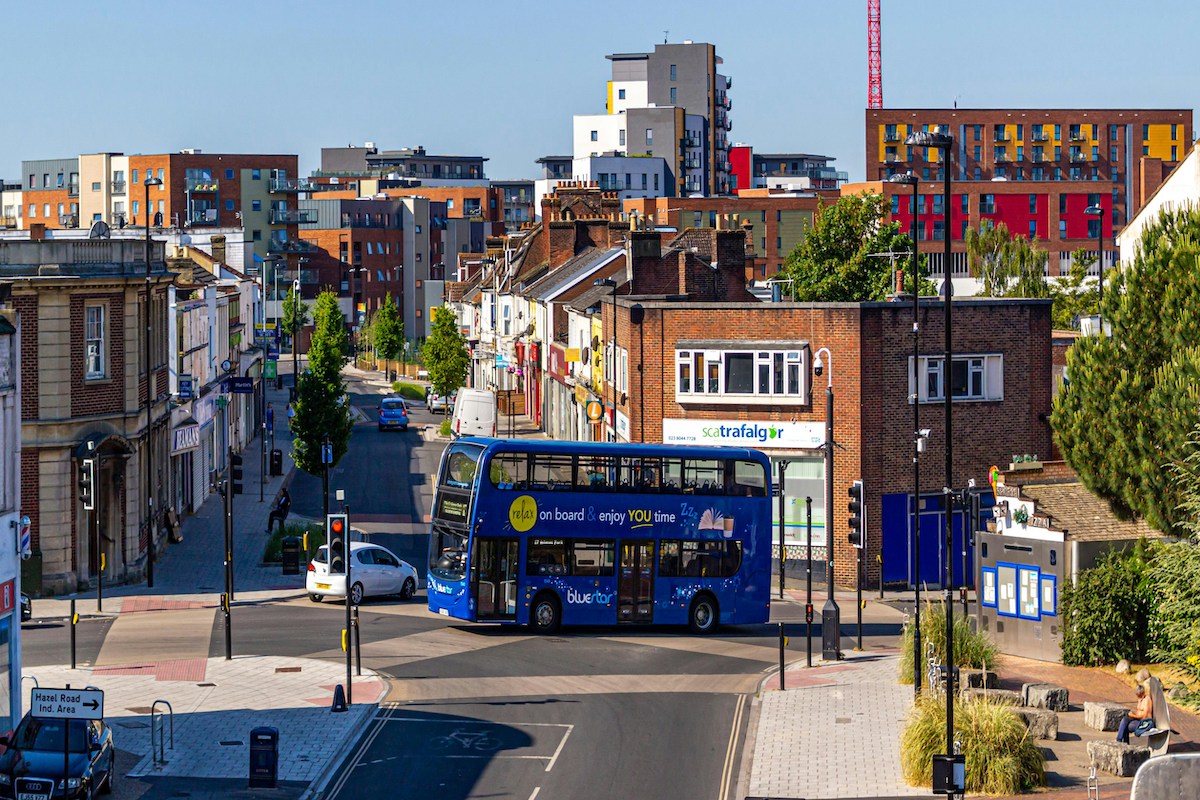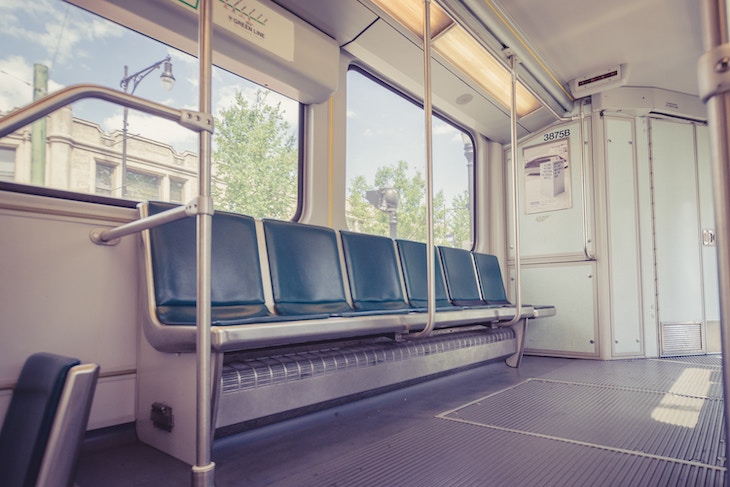Handicap Parking and Public Transportation: Bridging the Gaps for Inclusive Mobility

In the pursuit of an inclusive society, the intersection of handicap parking and public transportation plays a pivotal role in shaping the mobility landscape for individuals with disabilities. Enhancing inclusive mobility involves not only making public transit accessible but also ensuring that the journey begins and ends with seamless access to handicap parking.
This article explores the challenges faced by disabled commuters, the importance of integrating handicap parking at transit hubs, and the significance of ADA compliance in public transit to create a more inclusive and accessible transportation infrastructure.
Accessibility in Public Transportation: A Crucial Imperative
Accessibility to public transportation is a crucial imperative in pursuing a truly inclusive society. Beyond being a legal requirement, it represents a fundamental commitment to equal opportunities and freedom of movement for all individuals, regardless of ability. For those with disabilities, accessible public transportation is not merely a convenience but a lifeline ensuring participation in societal activities, education, employment, and community engagement.
Key facets of accessible public transportation include low-floor buses, ramps, and designated spaces for wheelchairs or mobility devices. Audible announcements and clear signage cater to individuals with visual or auditory impairments, fostering independence and confidence in navigating transit systems. The impact extends beyond individual commuters to influence broader community dynamics.
As we recognize accessibility as an imperative, public transportation becomes a symbol of societal values—embracing diversity, promoting inclusivity, and affording dignity to every member. This commitment requires ongoing efforts to go beyond compliance, adopting innovative solutions and universal design principles.
Ultimately, accessible public transportation is not just about moving people physically; it’s about propelling communities towards a future where everyone can participate actively and without barriers in the shared experiences of daily life.

Handicap Parking at Transit Hubs: A Seamless Transition
One of the critical aspects of inclusive mobility is ensuring that individuals with disabilities have convenient and accessible options for parking at transit hubs. Integrating handicap parking spaces close to entrances facilitates a seamless transition from private vehicles to public transportation. This strategic placement of parking spaces not only caters to the specific needs of disabled commuters but also promotes the use of public transit by reducing barriers to entry.
Bridging Gaps for Disabled Commuters: Overcoming Challenges
Disabled commuters often face challenges beyond the confines of public transportation vehicles. Navigating transit hubs, purchasing tickets, and reaching platforms can be daunting without adequate accessibility measures.
Bridging these gaps requires a comprehensive approach that addresses the entire journey, from the initial parking space to the final destination. This holistic perspective ensures that disabled individuals can participate fully in the public transportation experience.
ADA Compliance in Public Transit: A Legal and Moral Imperative
The Americans with Disabilities Act (ADA) is a guiding framework for ensuring equal access for individuals with disabilities in public spaces, including public transportation. ADA compliance in public transit involves not only the physical accessibility of vehicles but also extends to infrastructure, signage, and communication systems.
Meeting ADA standards isn’t just a legal checkbox; it’s a moral call to arms, a testament to our commitment to equality. To accept anything less is to perpetuate systemic discrimination, denying individuals with disabilities the dignity they deserve. ADA compliance isn’t negotiable; it’s the ethical underpinning of a society that values every citizen’s right to unrestricted mobility.
A refusal to champion accessibility isn’t just a disregard for the law; it’s a refusal to embrace the principles of justice and fairness. Let us not merely meet standards; let us exceed them, fervently declaring our dedication to a future where every individual, regardless of ability, can stride confidently towards equal opportunities and a truly inclusive society.
Enhancing Mobility for Individuals with Disabilities: A Multi-Faceted Approach
Enhancing mobility for individuals with disabilities requires a multifaceted approach encompassing various aspects of the transportation experience. This includes accessible parking spaces with proper signage and features such as curb cuts, ramps, and designated drop-off points. Public transit authorities must also invest in staff training to ensure that personnel can effectively assist disabled commuters, creating a supportive environment that fosters inclusive mobility.
Integrated Handicap Parking and Transportation: A Holistic Solution
Integrating handicap parking and public transportation is essential for creating a holistic solution to the mobility challenges faced by individuals with disabilities. Transit hubs should be designed with a focus on universal design principles, ensuring that parking facilities, ticketing counters, waiting areas, and boarding platforms are accessible to everyone.
This integrated approach facilitates the smooth transition from parking to public transit and promotes inclusivity and dignity for disabled commuters.

Inclusivity in Public Transit Infrastructure: Designing for All
Designing public transit infrastructure with inclusivity in mind is a fundamental step toward creating an accessible transportation network. This involves meeting minimum ADA requirements and adopting universal design principles that consider the diverse needs of individuals with disabilities.
From tactile paving for visually impaired individuals to elevators and ramps for those with mobility challenges, a well-designed and inclusive infrastructure ensures that public transportation is a viable option for all members of the community.
Accessible Parking Solutions for Commuters: Beyond Compliance
Accessible parking solutions for commuters go beyond mere compliance with regulations. While meeting ADA standards is crucial, going the extra mile involves thoughtful planning and innovation.
This may include implementing smart parking technologies, reserving spaces with charging stations for electric mobility devices, and using dynamic signage to convey real-time information about parking availability.
Handicap-Friendly Public Transportation: A Catalyst for Community Engagement
A handicap-friendly public transportation system serves as a catalyst for community engagement by fostering a sense of belonging and participation among individuals with disabilities.
By removing physical and logistical barriers, public transit becomes a viable option for disabled commuters, promoting community integration and reducing social isolation. The ripple effects include increased civic participation, improved access to education and employment opportunities, and a more connected and vibrant community.
The intersection of handicap parking and public transportation holds immense potential for shaping a more inclusive and accessible mobility landscape. By addressing the challenges faced by disabled commuters, integrating handicap parking at transit hubs, and ensuring ADA compliance in public transit, communities can foster a transportation infrastructure that caters to the needs of all individuals.
This enhances mobility and contributes to a more equitable and connected society where everyone can participate fully in the opportunities and experiences that public transportation affords.
Featured Image by Mangopear Creative on Unsplash